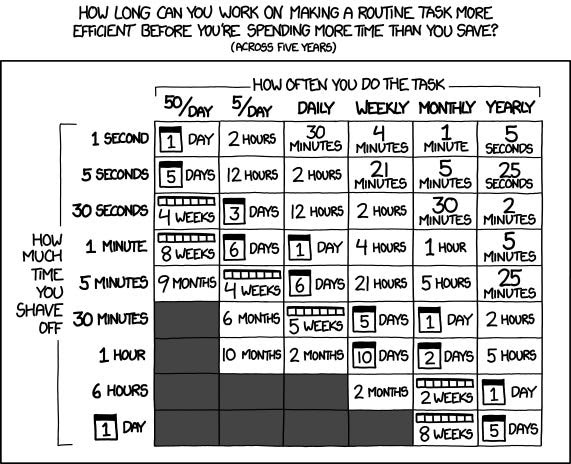
Build Automations to let ChatGPT handle the boring stuff for you
This is a guest post from Sjoerd Tiemensma. For more of his wonderful content, subscribe to his newsletter.
The Current State of Language Models
Lots of us AI enthusiasts have been trying to keep up with the latest and greatest. At first, right after ChatGPT came out, the pace at which developments were made was ridiculous. First ChatGPT, then came GPT-4, followed by the announcement of ChatGPT plugins, then all the buzz was around vector databases and LangChain, which opened the door for AI-Agents that could seemingly do any task by having AI agents talk to each other to solve problems on their own. The result? Mostly disappointing.
The above image is from a tweet by Jeremy Nguyen, challenging people to come up with something AutoGPT can do that's useful. Again, disappointment all around as the most useful cases that were shown were some simple shopping tasks. The agents mostly get stuck in loops and don't seem to be able to solve much.
Aside from GPT-4 in ChatGPT, many use cases have been somewhat lacking. I've written about various things I've been doing, and after working in this field and observing others, I've noticed something. While there are many moving parts, not much outside of ChatGPT seems to come close to being as useful as ChatGPT itself. Asking it questions about stuff you don't know much about can help a lot. Asking for advice, on how to write Excel formulas, write something in Python, and all the cool stuff done inside of the ChatGPT environment.
The same can be said for the plugins. Honestly? A little disappointing. The code interpreter seems interesting, but most of us don't have access to that (although there are a few ways you can get close to its functionality, more on that later). There's one thing that has done incredible things for me - and that is the ChatGPT API.
What about the API?
The API enables us to obtain responses from ChatGPT outside of the ChatGPT website. This, along with no-code tools, allows for seamless integration into nearly every software application we use daily. This combined with the GPT-4 model's capability to write code for us means we can utilize the model to do all kinds of tasks for us.
With access to these options, I've managed to delegate most of the repetitive tasks that I dislike to ChatGPT—for instance, summarizing and categorizing emails, or creating reports that follow a basic outline. I've even developed a tool that allows me to record audio, upload it to Dropbox, and have it transformed into a report exactly as I want it.
The tasks I mainly use these tools for share common characteristics:
-
They are frequent
-
The reasoning behind doing the task is straightforward
-
I find the task tedious
Examples include daily emails, weekly reports, and brief descriptions. These are all tasks we might already use ChatGPT for, but if the task is nearly identical each time and could be handled by ChatGPT, why not automate it? From personal experience, I can say that even if it doesn't save much time, it's a lot more fun and we can learn from the process.
Recently, the ChatGPT model (gpt-3.5 turbo) became even more affordable. Occasional uses are incredibly cost-effective, and the 16k model allows for more context to be processed. I encourage everyone to consider automating some mundane, straightforward tasks that might be more effort to copy and paste into ChatGPT than just doing them yourself.
In summary, ChatGPT offers two main benefits:
-
First, it assists in building automation by figuring out the steps and setting up the no-code tool or programming.
-
Second, it acts as the brain of automation, utilizing the model's ability to reason on our behalf.
I recently appeared on the How to Talk to AI podcast with Goda Go, where she mentioned her emails. I'd like to share how you could approach and solve such issues.
It typically takes us only a few seconds to determine if something is interesting or not. This task is relatively simple, but when performed every day, it adds up. When you open your inbox and see around a hundred emails, of which only a small fraction might be interesting, the task suddenly becomes more daunting.
That's where the ChatGPT API comes into play. It can handle many of these tasks for you if you invest the time to set it up once.
Many small tasks in our daily lives are not overly complex. They may require knowledge, but we often follow a simple framework to accomplish them, based on context.
By creating a simple structure and breaking it down into steps, we allow ChatGPT to handle the task.
So let's dive in and build something!
Let's start with something simple. I want all of this to be as accessible as possible, so I'll give two examples - one of which uses Zapier and one that uses Make.com. While Zapier is a lot easier to use and I'd recommend it for everyone (their AI tool is quite incredible) the free option is VERY limited and the paid option is pretty steep for what you get in return. It's why I included an example that uses Make.com as well.
So first of all, if we look at Zapier's free option we see Only Single-step Zaps. This means we can have a trigger (incoming e-mail) and one action (store somewhere). But that means, we can't do anything with ChatGPT, because on the illustration above we need:
-
A trigger: Receiving an e-mail
-
An action: Send it over to ChatGPT to receive a response
But then storing it in Google Sheets is no longer an option.. or can we work around that?
I've got a little trick up my sleeve to get just a bit more out of Zapier's free account.
What if, instead of using ChatGPT in Zapier we just use the ChatGPT https://useai.substack.com/p/
That way we can use the power of ChatGPT with a free Zapier account!
As the illustration below shows, we can swap the storage and send it to ChatGPT.
We can use the API inside Google Sheets to generate pre-written responses, extract information, and summarize them for easy referencing. We can classify if we should do something with a certain email or not with some good old prompting and a few smart functions in Google Sheets. But that can be a little complicated, let's focus on something easier, something other than E-mail.
What about RSS?
We can use RSS to track all kinds of articles, websites, and blogs including this one!
We can create a trigger for RSS with the following link: https://useai.substack.com/
Store that in the Sheet in which we have built the GPT function, and with a little Google Sheets function wizardry (thanks to ChatGPT for the help):
So let's jump in and build something for ourselves
Although I prefer Zapier for its simplicity, we're going to use Make.com for the simple reason that Make.com has a very decent free plan, so you can build something and have it run long-term, only paying for OpenAI's API cost (which, with the model we're using, is very cheap).
Zapier's free account only allows for one trigger and a single step, which means you can't have ChatGPT modify anything and store it afterwards.
The only requirement here is an OpenAI API key. If you create an account with a phone number added on openAI, you have 5$ in API usage credit for free, which expires after 3 months. After that it requires adding billing information. More info here: https://platform.openai.com/
docs/guides/production-best- practices/api-keys
We will make something cool that you can adjust easily to work for yourself. It requires the following:
-
Free account on Make.com
-
OpenAI API key
-
Free Dropbox account
Say you record some audio. Think of a meeting, quick notes, yourself rambling about something
Luckily for us, Make.com Allows us to share these steps in a pretty simple way:
However, we still need to set up a thing or two. You have to set up your Dropbox account and choose the folder in which you want to upload your files. In the last step, you need to specify where you want to store the result. In both the Whisper and the ChatGPT API step replace API_KEY_HERE with your API key (starts with sk-...)
Inside the Prompt step, you can change the prompt with whatever you want. I put in a little prompt of mine that takes any messy text and turns it into something structured and readable.
In the Whisper Step, there's a "prompt" field. Below it, fill in some context. This can do a great job of improving the quality of the transcription. For example, if you were to talk about the ChatGPT API, without a prompt, Whisper might turn it into "GBT". Add relevant context that, say for example you're talking about GPT, and it'll transcribe it correctly.
If you have some cash to spare, I would highly suggest using Zapier instead. It's significantly more user friendly, especially with their integrated AI options.
In case you're not interested in transcriptions simply delete all the steps aside from the JSON and ChatGPT step, and use it for something else. Now Make has a bit of a learning curve: one important tip is to use the "run this module only" option when building something to get the values needed for the next step.
Go out there and get building!









